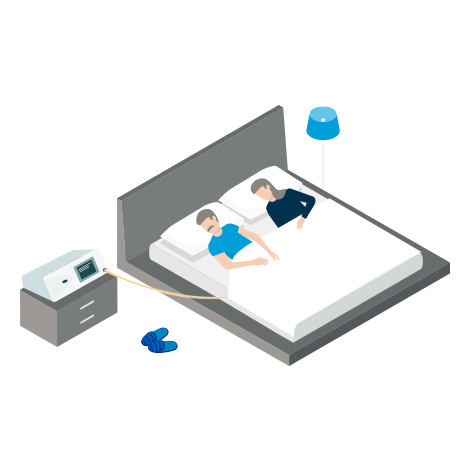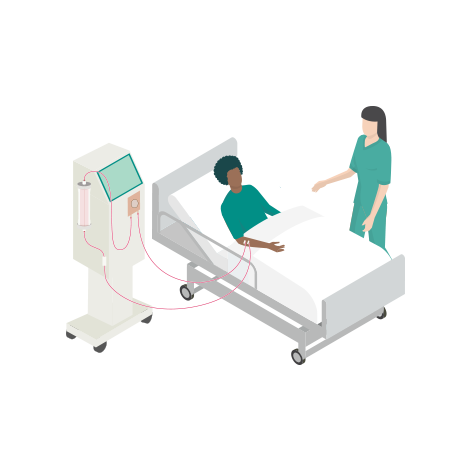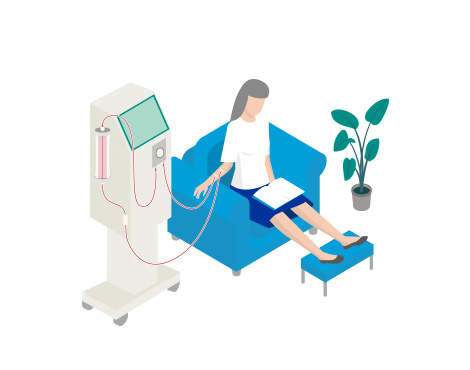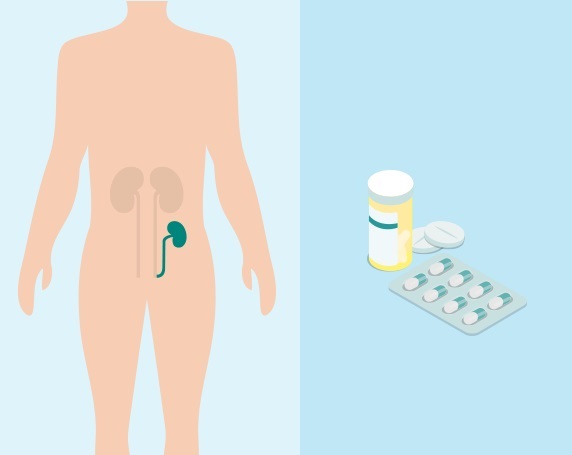Chronic kidney disease (CKD) treatments
Finding the chronic kidney disease (CKD) treatment that is best suited to your physical, emotional and lifestyle needs may improve your quality of life and give you peace of mind.
Most people living with end-stage kidney disease are treated with dialysis – either at home or at a clinic. Dialysis is a process involving the removal of waste and extra fluid from your blood that your kidneys are no longer able to filter out. Other treatment options for kidney disease include kidney transplant or conservative care.

Peritoneal dialysis (PD) at home
Peritoneal dialysis (PD) is a treatment that uses the lining of your abdomen (peritoneal membrane) as a filter to clean your blood while the dialysis solution is in your peritoneal cavity. Because of this, PD can be performed at home, at work, or while travelling, either by yourself or with the support of a caregiver. You can perform PD during the day or while you sleep, giving you the flexibility to plan your dialysis treatments around your daily schedule. Peritoneal dialysis is typically performed every day.

In-centre haemodialysis (in-centre HD)
Haemodialysis can also be performed in a hospital or dialysis clinic under the supervision of your clinician. In-centre haemodialysis (in-centre HD) typically requires that you visit the hospital or clinic 3 times a week for treatments that last between 4 and 5 hours each time. Your treatment will be closely supervised, and you will be around others who are receiving a similar treatment.

Home haemodialysis (home HD)
Haemodialysis (HD) filters your blood using a machine that has a synthetic membrane called a dialyser. It can be performed at home, either during the day or while you sleep. You can either do this yourself or with the support of a caregiver. The ability to do your own treatment at home gives you the freedom to plan your treatment schedule around work, school, or other activities. It also allows for more frequent treatment than in centre dialysis which may improve how well you feel. Home HD is typically performed 3-6 times per week.

Kidney transplant & conservative care
You may also consider kidney disease treatment options other than dialysis. A kidney transplant may be an option if you meet the necessary requirements. For some, conservative care without dialysis may be a suitable option.

